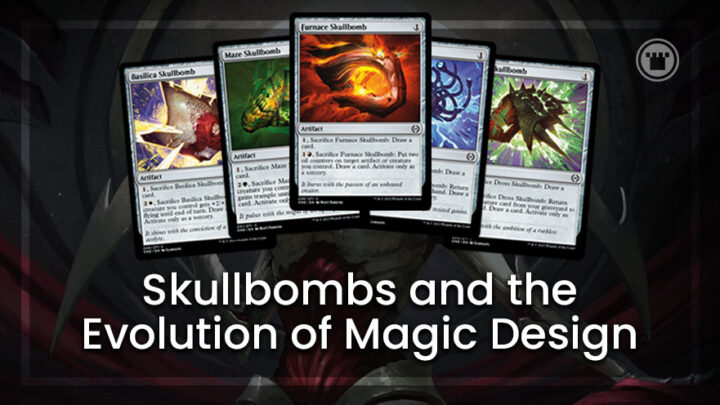In Phyrexia: All Will Be One, we have a cycle of one-mana artifacts with activated abilities that can draw you a card called Skullbombs. This builds on a similar cycle from Scars of Mirrodin called Spellbombs, which were themselves a sequel to the original Spellbombs from Mirrodin block. It’s not often we see cycles full reiterated this many times, but their existence allows us to dissect how Magic design has evolved throughout the years.
Original Mirrodin came out in 2003. Next, seven years later, we got Scars. And since then, it has taken 13 more years before we returned with ONE. A lot happened in each of those gaps, so let’s take a look at these cycles to see how they changed over time and what that says about Magic at the time they hit the scene.
The Mirrodin Spellbombs
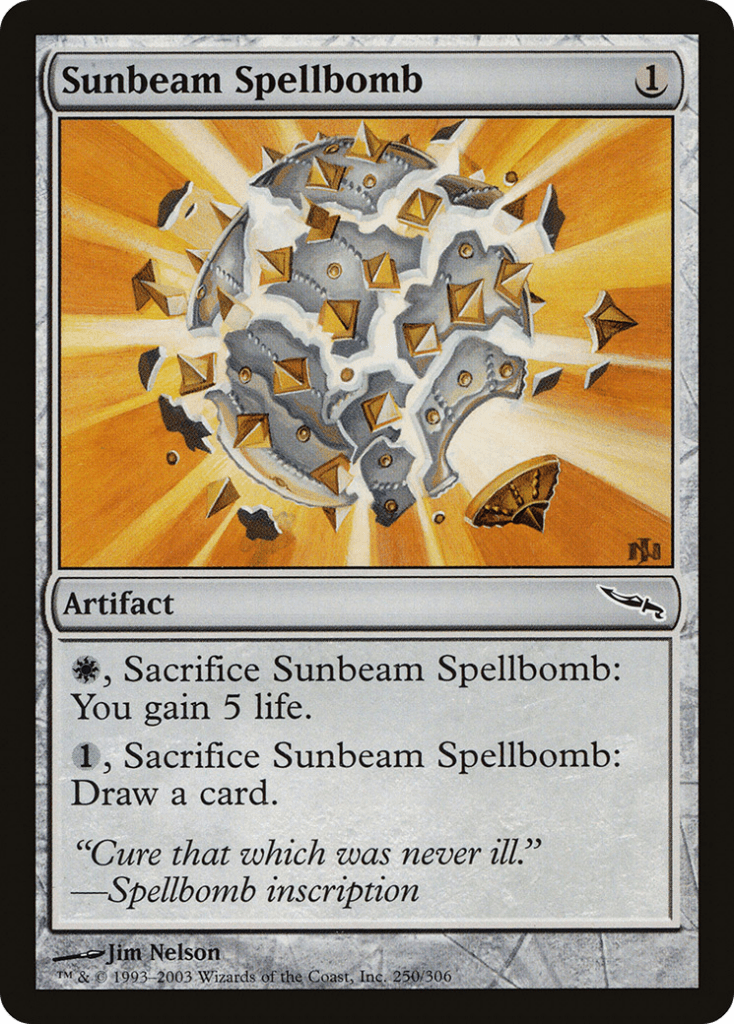

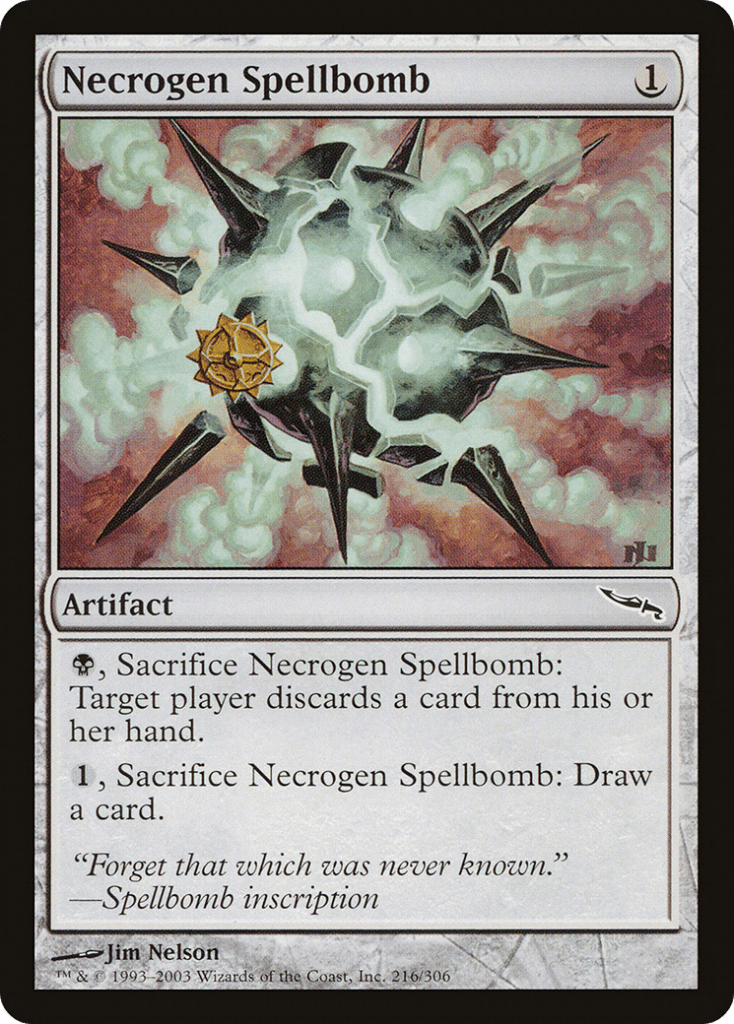
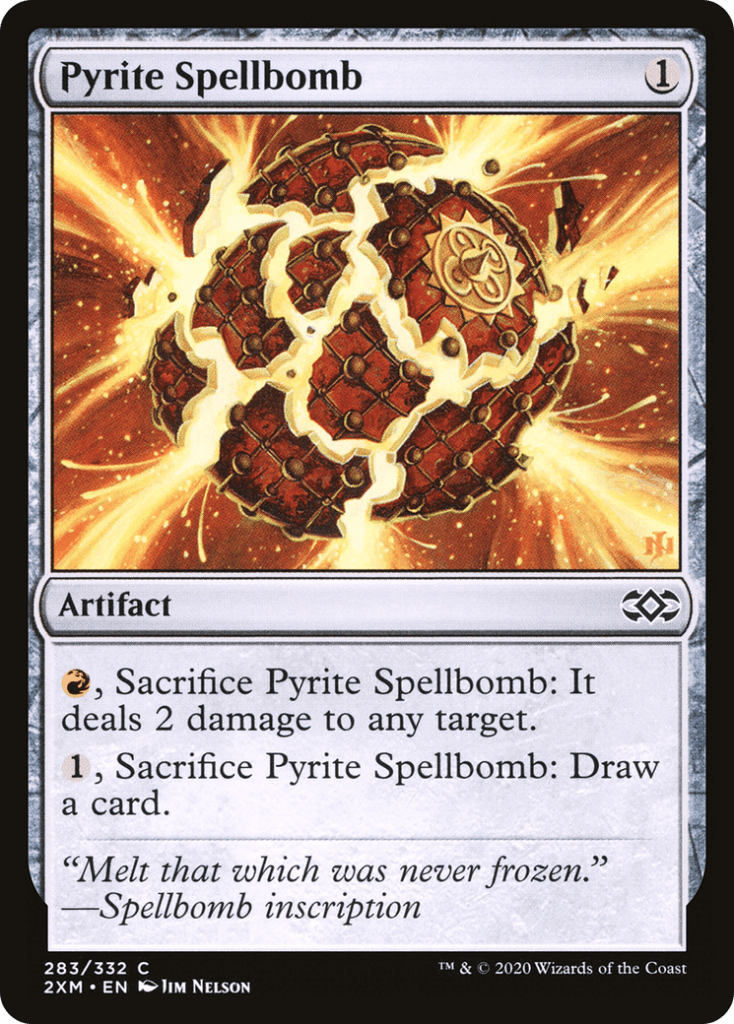

The original Spellbombs give players a choice once they’ve hit the battlefield: you can spend a colored mana to get an effect that fits that color or pay any kind of mana to simply draw a card.
This meant any deck could play these as space fillers — ways to relatively quickly cantrip through your deck while perhaps getting some triggers off artifacts entering or leaving the battlefield. But to get the other effect of the Spellbomb, you need to play them in a deck with the correctly colored mana.
First, some context as we jump into talking about these. Mirrodin was the first outwardly artifact-themed set since Antiquities back at the start of the game’s history. Back then, that pretty much just meant there were more artifacts in the set relative to other cards than usual (Limited wasn’t even a format that packs were collated for at that point).
There had, of course, been extremely powerful artifacts in the game’s past. Time Vault was around since Alpha, Scroll Rack had been dominant since Tempest and Memory Jar was A Major Problem in Urza’s Legacy, just to name a few.
Mirrodin, as both a set and a block, was something different. It introduced Equipment to the game, was the first non-core set in the modern card frame and featured artifact-based mechanics — most notably Affinity. Affinity made any artifact desirable, and these Spellbombs were no exception, having at least some use in literally every deck.
As with any cycle that touches every color over five cards, these original Spellbombs’s on-color abilities vary in strength when examined in a vacuum. Aether and Necrogen Spellbomb both have a lot of utility, Lifespark and Sunbeam are only really good in specific situations and Pyrite Spellbomb has often been the win condition in recursive artifact decks across formats (hello Eggs players).
These Spellbombs are a nice little window into Magic design philosophy at the time. You had to be on-color in your mana to get the spell-like effect (even if Affinity itself was a huge blow to the color pie at the time) and you couldn’t take advantage of both halves of the card in one use, no matter what. These were good, versatile, little artifacts — but the upside was limited with a hard and fast choice.
The Scars Spellbombs
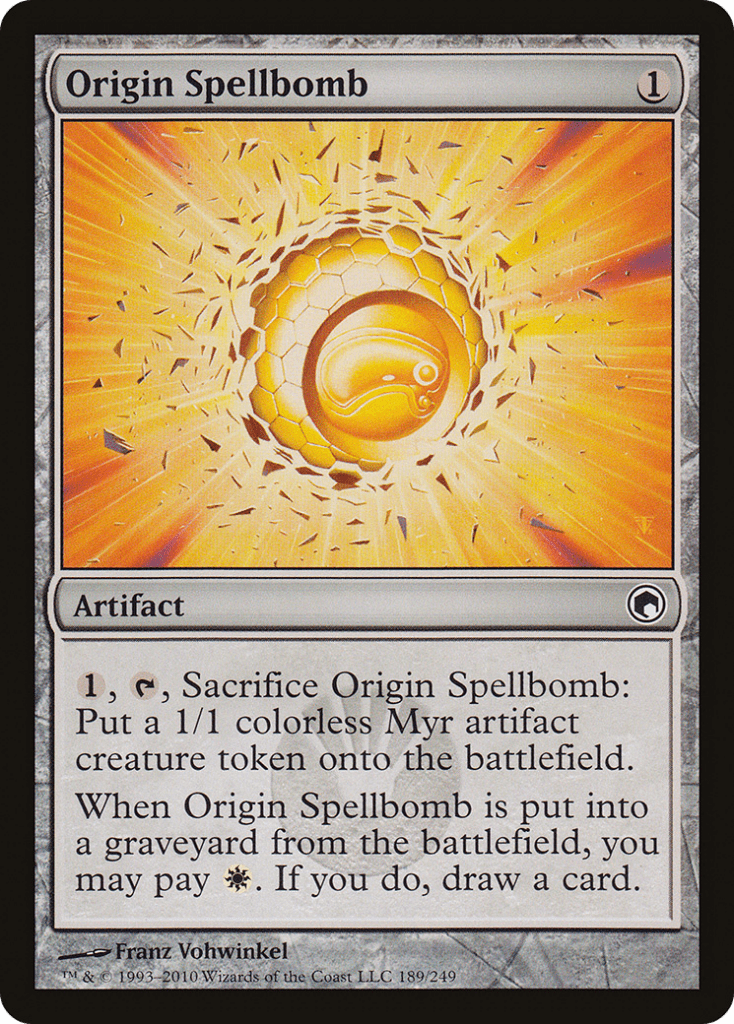

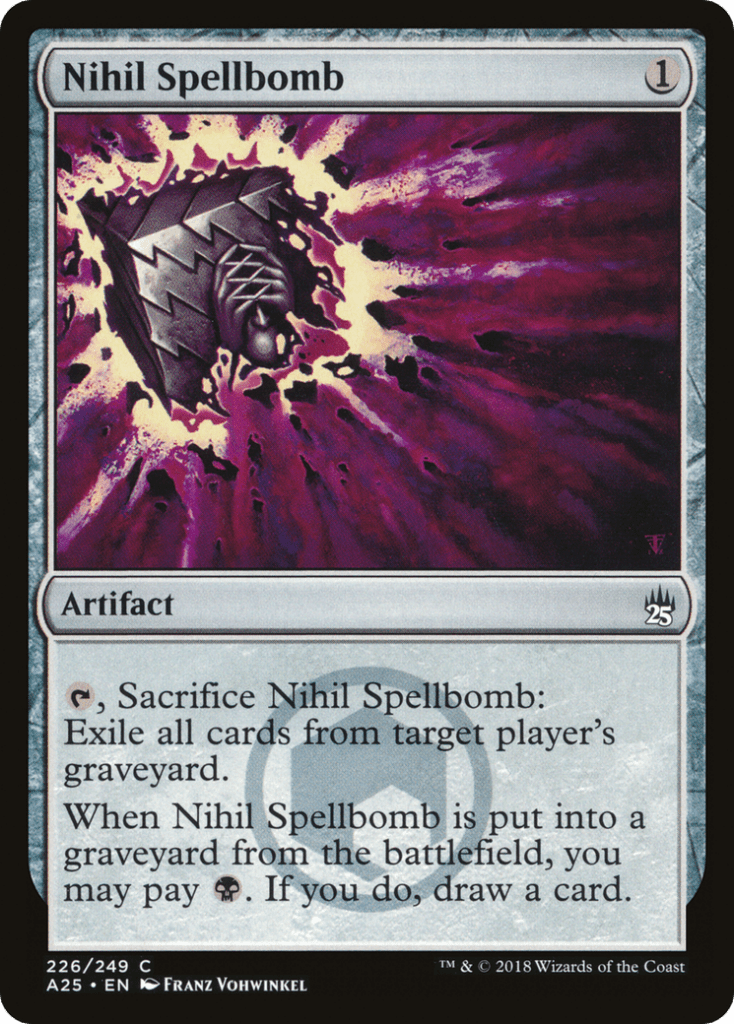
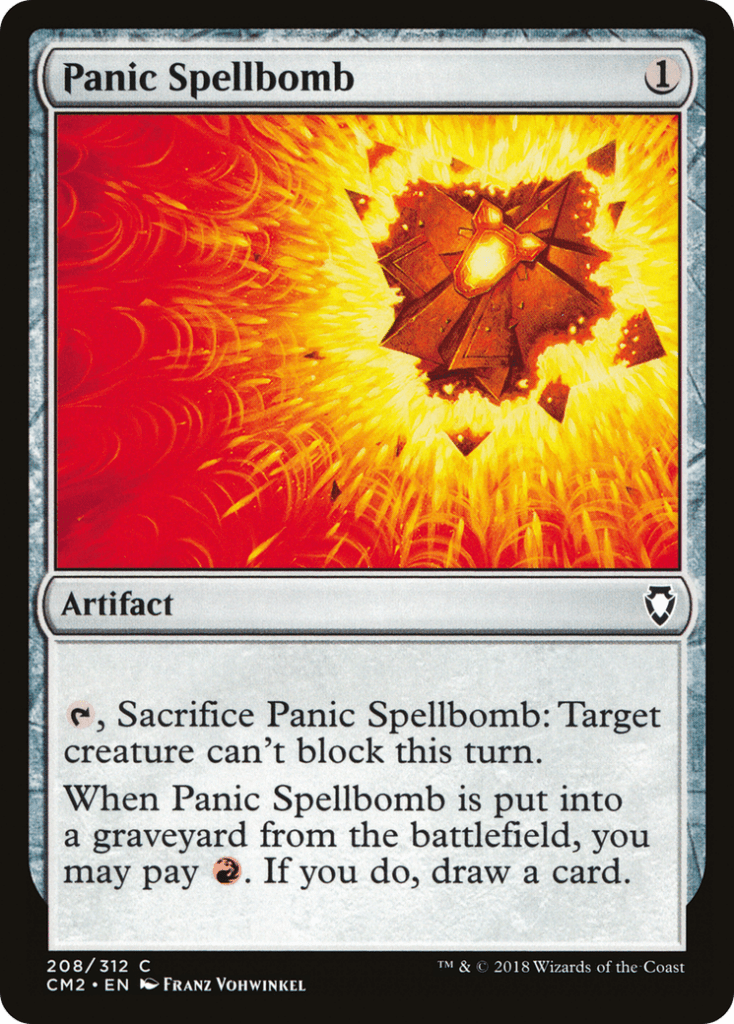
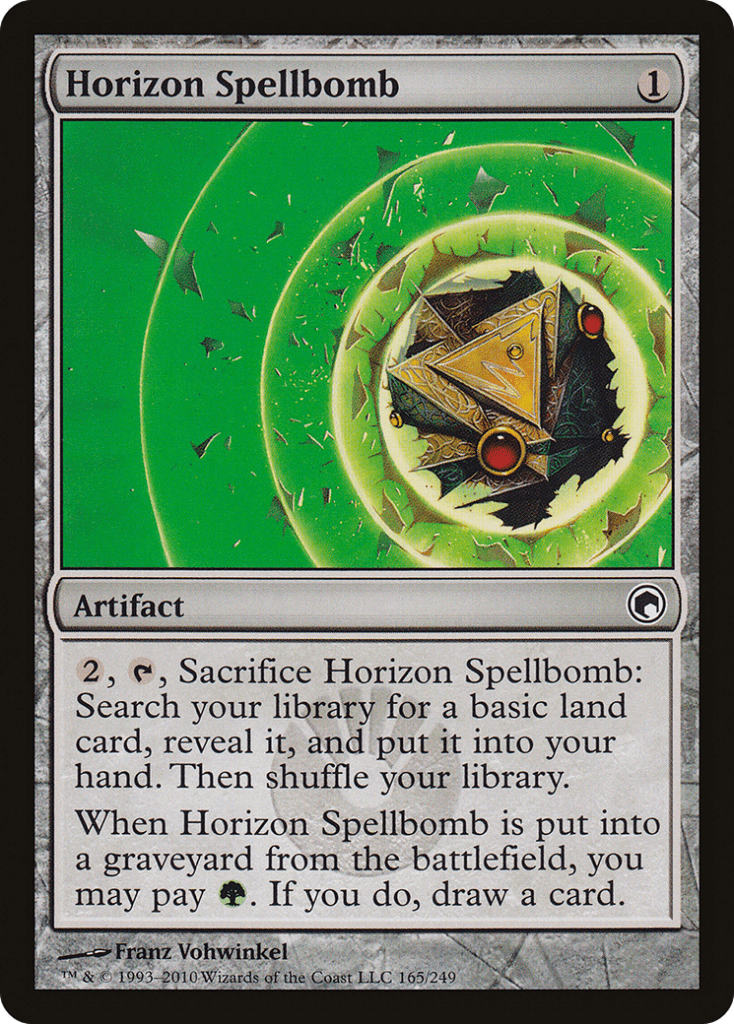
The updated Spellbombs play similarly to the originals, but essentially inverted. They all activate off a tap ability (with some extra mana attached to the activation costs of the Origin and Horizon variants) which sacrifices themselves. And then, whenever they are put into a graveyard from play, you may pay an appropriately colored mana to draw a card.
So, while the original Spellbombs could be played in any deck for the card draw but had the color-flavored ability locked behind colored mana, the Scars Spellbombs reversed the paradigm. Players could get the color-flavored effect in any deck but only get the card draw by having the correct mana for it.
Also, the choice given was now about whether players wanted to pay a little more mana to have both effects. This made the card draw feel more like a bonus, as it was only added upside if you had the correct mana to use it.
Without Affinity in the block, these didn’t have the same synergy within their environment as the originals. Metalcraft was around, but decks that wanted to make use of the mechanic generally had higher-impact options.
Of the five, only two had lasting impact. Nihil Spellbomb was a sideboard, graveyard hate option for a long time (especially in decks that had ways to recur it out of their own graveyard) and Horizon Spellbomb’s ability to fix your mana was something a lot of even off-color decks found handy.
The templating of these Spellbombs did cause a little confusion, since if you paid the extra colored mana for the draw, you would technically draw the card before the other effect happened. Sacrificing themselves was a cost of activating their ability, after all, so the draw trigger would end up on stack above the main effect.
This created a few tournament issues. For example, if you searched your library with Horizon Spellbomb’s first effect before drawing a card with the second, you were technically breaking the rules.
This cycle is a fascinating snapshot of Magic design at the time. They read far more as all potential upside rather than a stark choice. Three of the five are even easier to use than the original cycle, needing only to tap once they are in play to activate.
These are even more enabling of color-pie breaking, as you get the on-color effect without needing to spend colored mana. And yet, the effects have been significantly nerfed.
There’s nothing close to the level of Pyrite Spellbomb here, with Panic Spellbomb being a situationally okay Limited effect, at best. Flight Spellbomb is a similar downgrade to Aether, and even though Nihil Spellbomb did see more play than Necrogen, it only fits in against specific strategies.
Origin Spellbomb is likely better than Sunbeam 99% of the time, but it’s still not terribly impressive. Horizon is the clear upgrade over its predecessor in most situations, but it stayed fringe-playable, at best. Magic had been burned by Affinity the last time, so this set made sure to hold this cycle in check.
The Skullbombs





Two major things have happened in Magic design between Scars block and Phyrexia: All Will Be One. I mean, a ton of things have changed, but there’s two main points that affect our discussion here: Bannings have become more common and power creep has certainly done its thing.
At the time of Scars block, bans in Standard were quite rare and always a big deal. The power level of the game was very fine-tuned, with cards from Standard only breaking into Eternal formats a drip at a time.
In more recent times, for a myriad of reasons beyond the scope of this article, design has taken a different approach. There are a lot more big swings on individual card designs, with each set regularly causing major shake ups to multiple archetypes in older formats — plus a lot more chances taken on the power level of a given card in Standard necessitating a ban.
Which brings us finally to the Skullbombs. These far more resemble the original Spellbombs than the Scars Spellbombs, drawing you a card for a single mana of any type and requiring on-color mana to activate their on-color ability.
Yet, there are two main differences here. First, the on-color abilities cost a little more to activate (but also draw you a card) and those abilities can only be activated at sorcery speed.
Sorcery speed is a significant downside when it comes to how these can be used. Both Basilica and Maze Skullbombs buff up your creatures, and sorcery speed forces you to telegraph your plans in your main phase.
Surgical Skullbomb has the same effect as Aether Spellbomb but forces you to use mana on your turn to get it. Furnace Spellbomb is purely a synergy engine, having no effect on its own outside of whatever else the set does with oil counters.
Dross Skullbomb is easily the frontrunner in power level here, with the sorcery speed clause not really hurting the usefulness of the effect.
So, with the downside of sorcery speed stapled onto these effects, the question becomes whether drawing a card alongside those effects is enough to make up for this change.
Adding that card draw to the on-color effects largely mitigates the main choice presented by the original Spellbombs. Instead of choosing between effects, it’s more about whether you need to cash in the card draw at the first opportune moment or if you can wait for the main effect to be situationally relevant.
It’s an interesting tension to add to the cards, and a handy way to nerf the power level. If not for the sorcery-speed clause, these would easily be the most powerful iterations of the cycle. The design choices show how the Magic environment’s overall power has risen, but with the caveat that players must put in some effort to use that power to its fullest potential.
The Cycle Ends
I have a feeling Phyrexia: All Will Be One and the next couple of sets are the last we’ll see of Mirrodin for a long, long time — if not forever. That means it’s also likely the last we’ll get of these cycles of small, one-mana, artifact bombs.
Magic has done similar cycles elsewhere (the Puzzleknots from Kaladesh are a good comparison), but this is a cycle that feels finally…compleat, somehow (sorry, had to get one weird spelling of complete in there. This IS an article about Phyrexia: All Will Be One, after all).
I do look forward to seeing how the Skullbombs play in both Limited and various Constructed formats. Dross is my pick to break through into Standard, if any of them do, and I can see it having a place in casual Commander, as well.
As an admittedly old-school Eggs player myself, I always enjoy seeing these kinds of low-cost, marginal artifacts pop up every now and then. They may turn out to be more useful than you think.

Chris is the Associate Media Producer at Card Kingdom. He would like to apologize to his son for not holding onto more cards from when he first started playing, as that likely would have paid for college. He enjoys pretty much all formats of Magic, but usually ends up playing decks that make other people dislike playing those formats with him.

